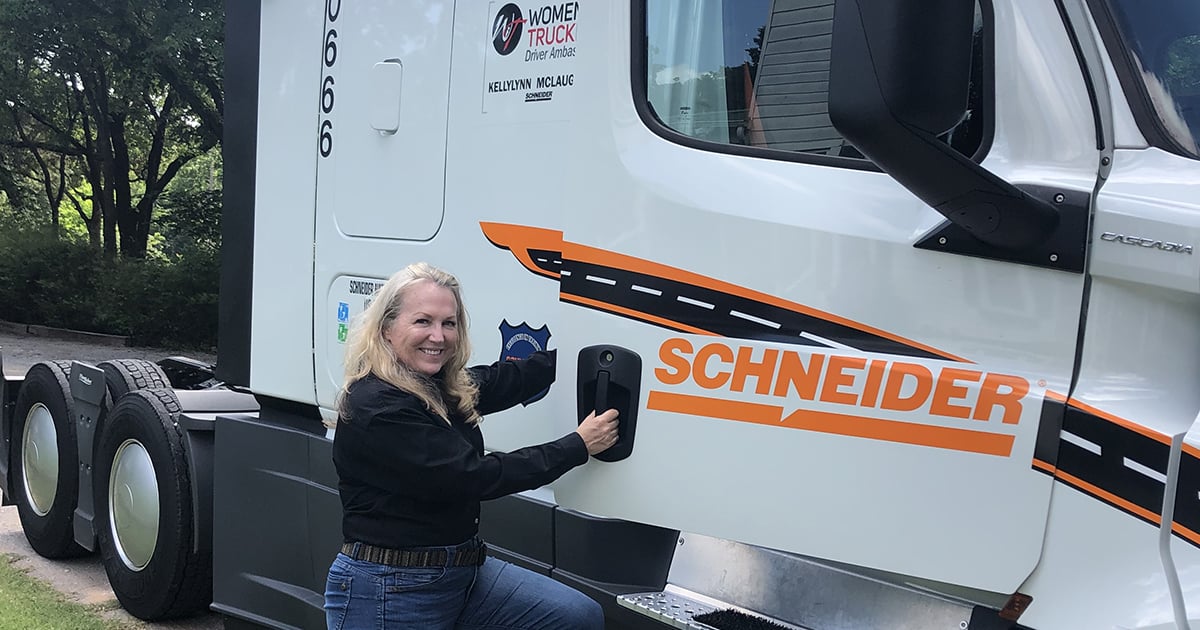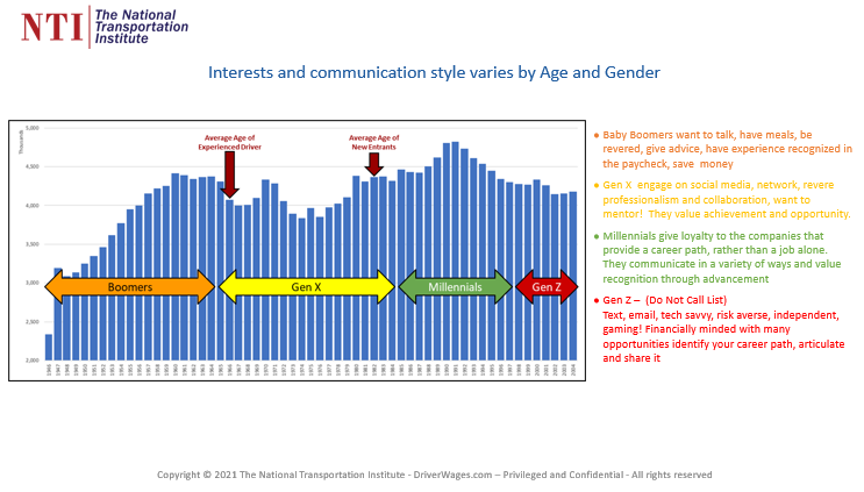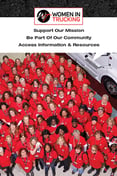Driver Ambassador: How Retention and Respect Go Hand in Hand
by Kellylynn McLaughlin, on May 18, 2021 4:29:03 PM

Hear from Kellylynn herself! Take a listen to the podcast version below.
As those in the trucking industry know, the Post-Trip Inspection is a time to check and see if anything has changed with your equipment since you began your trip and if there are any items that need to be addressed before continuing on down the road. It’s a time to reflect, assess, and plan what’s next.
REFLECT
As I go about my job as the WIT Driver Ambassador and a Schneider OTR company driver, I frequently engage in discussions and read articles focused on our nation’s driver shortage and how to increase driver retention rates. This is a topic that really interests me, and I have spent quite a bit of time thinking about potential solutions and why I stay with my company.
Early on in my supply chain career, I was putting my thoughts and questions down on paper and sharing them with executives and driver managers within my carrier. Yeah, I know, silly for me to think I was the one who had the magic bullet when so many are also working towards improving driver retention! The solution(s) seemed so simple and obvious to me that I did not understand why more progress was not being made.
I eventually decided that I must have been missing key pieces of information from the other side of the issue and needed to do more investigation. I’ve continued those letters and conversations, but I have also augmented my understanding of the issues through conversations with industry professionals, industry articles and my driver peers. In fact, I reached out to three organizations who are experts in this retention arena while doing my research for this blog.
ASSESS
When I initially entered the industry, I was shocked, and now I’m just plain old annoyed, by the lack of respect for our highly skilled and hardworking professional drivers who work 70-hour weeks doing a dangerous, essential job while having to endure real lifestyle challenges. Yes, I truly believe that one of the biggest detractors to driver retention is directly related to that lack of respect for drivers.
We’ve all heard the saying “money talks” and it does, but I don’t know any driver that would be willing to stay with a company in which they feel disrespected and undervalued, even if they are making what they consider to be a good wage.
The question then becomes what does respect look like for professional drivers, how do carriers effectively communicate with and meet the expectations of our multigenerational and diverse driver workforce to keep them in the driver seat?
Pay definitely touches on respect. No one feels like a respected and valued member of the supply chain if they are not paid a salary commensurate with their risk, time, skill and lifestyle hardships. Drivers have been asking for real detention pay and compensation when company equipment breaks down for years. It seems reasonable that drivers would expect and feel more respected by their employer if their time delayed at a customer or repair shop had a value equal to what they would make if they were not held up and were rolling.
Pay is such a complicated process. I laugh, because I doubt we could make it any more complicated. At least it is coming up across the industry, although I still think the industry has a way to go in terms of fairly compensating our drivers.
Making sure drivers can understand the pay process, transparency and paycheck accuracy is key. But as Professional Driver Agency suggests in their recent blog, Five Things You Can Do Today To Make Your Drivers Feel More Respected, if carriers really set their drivers up for success (especially the new drivers), then it is easier for their drivers to reach a high earning potential more quickly.
Companies that consistently get their drivers home on time, invest in paid or provide parking for their drivers, issue trucks with state-of-the-art safety and comfort technology and offer perks for their drivers are all part of those efforts that demonstrate respect and enhance retention of drivers.
The other value that I think is closely tied to respect and affects retention is communication. In one of her recent webinars presented by Driver Reach, 'Recruit from the Inside Out: Winning with Retention,' Leah Shaver, President and CEO of The National Transportation Institute, said, “If we think it is hard to hire drivers now - it is just going to get worse.” Leah, who is also Women In Trucking Association’s Secretary and Membership Committee Chair, is absolutely right! One of the things she said that resonated with me was, “We have 4 generations working in the industry (Boomers, Gen X, Millennials, and now Gen Z) and each have their own preferred way of communicating and career path expectations. The industry needs to be able to communicate with and meet the expectations of divers from four different generational groups. Communication efforts in a one-size-fits-all approach to retain can be ineffective.”
Drivers often reach out to me seeking help in communicating with their employer. Usually, they are frustrated and feeling unimportant because of communication issues with their carrier and most are on the verge of leaving their employer. When a driver feels left out, that can be the moment that truly undermines all the positive efforts a carrier may have made. Let’s not forget that drivers are a valuable, on-the-ground resource to carriers and their customers, and those communication lines need to stay open.
Communication is so important in our personal lives, that I am surprised that any carrier/employer could inadvertently overlook how critically important that is to a driver’s happiness at work. No, or slow, response to a driver about a load, pay or an equipment issue is not only a failure to communicate but it is disrespectful. As Leah pointed out in her presentation, to complicate the issue, we know different generations prefer receiving their communication via different methods…for example, an old school phone call for maybe a more “mature” driver is an appropriate approach verses a short and to-the-point text message for a Gen Z driver.
See her helpful chart below.

PLAN
Well, I plan to keep on having these conversations about respect and communication with regards to professional drivers. I know there is no silver bullet when it comes to driver retention, each carrier is different and it’s almost as if the driver target keeps moving. If your carrier or customers are prioritizing communication with and seeking drivers’ opinions, what can you do to start the conversation?
From what I understand, it is considerably less expensive to retain your current drivers than to hire and train new drivers. It seems logical that drivers who are respected through a variety of initiatives by their carrier and customers and are also a valued “customer” within the communication chain, would be great referrals for new hires as well. Almost like a twofer!
Fellow Professional Drivers: Do these ideas resonate with you? Have you noticed any of these issues being addressed at your carrier? How do you communicate ideas and suggestions with your carrier? Does your carrier do regular check-ins with drivers to see if they are implementing changes that resonate with their drivers? Do you have out of the box ideas or experiences to share? We have several avenues to comment your thoughts on this blog. We would love to hear from you.
 Like this kind of content?
Like this kind of content?
As a member of the Women In Trucking Association, stay on top of emerging trends and business issues impacting transportation, logistics, and supply chain operations, learn the importance of gender diversity in the workplace and the need for more women drivers, and see best practices in encouraging the employment of women in the trucking industry. Learn More





